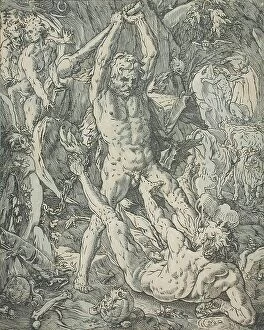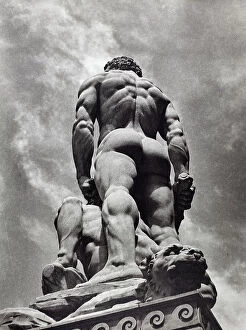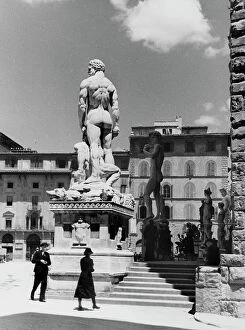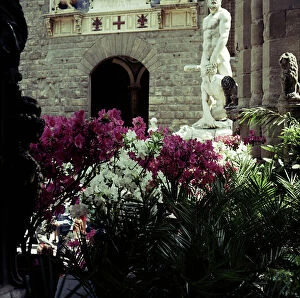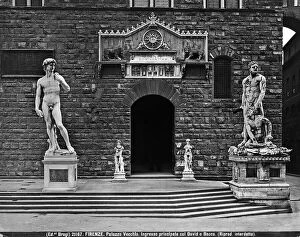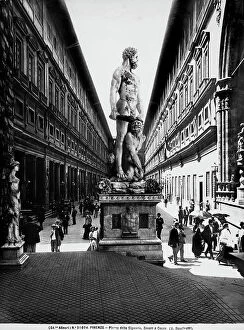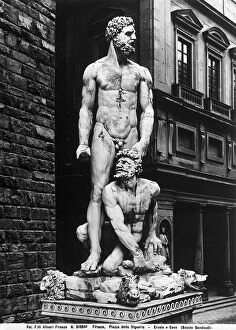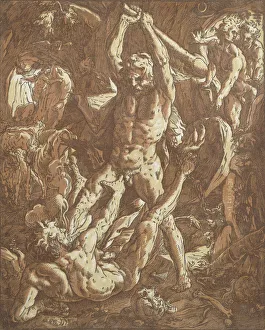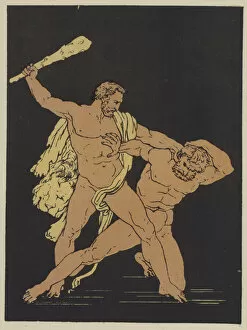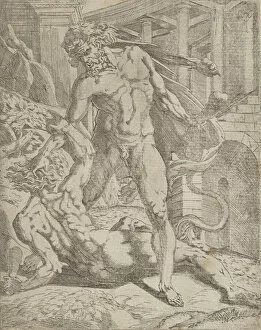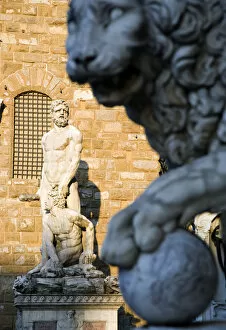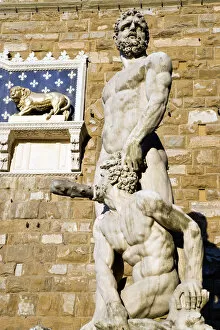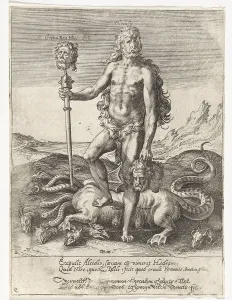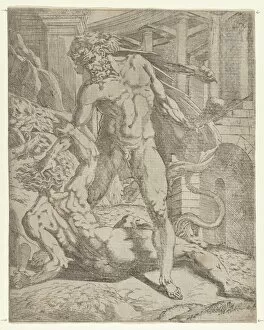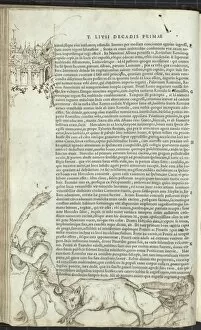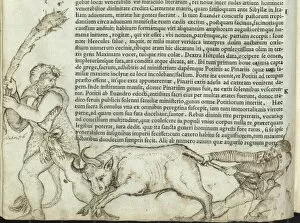Cacus Collection
"Cacus: The Mythical Battle of Strength and Cunning" The tale of Hercules and Cacus has been immortalized through various artistic mediums
All Professionally Made to Order for Quick Shipping
"Cacus: The Mythical Battle of Strength and Cunning" The tale of Hercules and Cacus has been immortalized through various artistic mediums, showcasing the epic clash between a hero and a formidable foe. From marble sculptures to woodcuts, engravings to lithographs, artists have captured the essence of this legendary encounter. One such masterpiece is "Hercules and Cacus" in marble, created between 1525-1534. This sculpture portrays the raw power of Hercules as he confronts the monstrous Cacus. The intricate details etched into the stone bring forth a sense of awe-inspiring strength. In another rendition titled "Hercules Conquering Cacus, " depicted in a woodcut from around 1496, we witness Hercules overpowering his adversary with sheer determination. The lines carved into the wood create an intense atmosphere that mirrors their fierce struggle. Moving forward to 1588, we encounter yet another captivating portrayal in chiaroscuro woodcut on laid paper titled "Hercules and Cacus. " Here, light and shadow dance upon their figures, accentuating every muscle flexed during this climactic battle. Not limited to visual arts alone, literature also pays homage to this mythological duel. Dante's Inferno features an engraving called "Cacus" in Canto 25. It captures the moment when Hercules delivers justice upon his nemesis with unyielding force. As time progressed, artists like Heinrich Aldegrever embraced new techniques for depicting this iconic confrontation. His woodcut entitled "Hercules Killing Cacus" from 1550 showcases intricate linework that emphasizes both protagonists' physical prowess. Albrecht Durer further contributed to immortalizing this legend through works such as "Hercules Conquering the Molionide Twins" and "Hercules and Cacus. " These pieces demonstrate Durer's mastery in capturing dynamic movement while highlighting Hercules' dominance.

